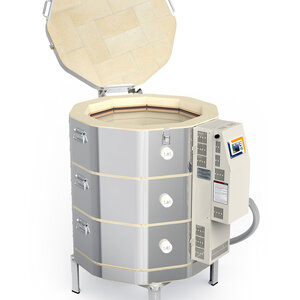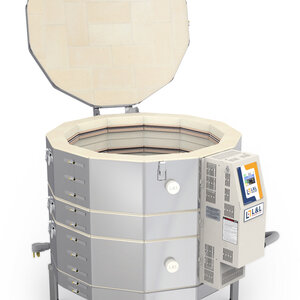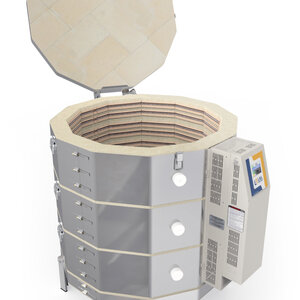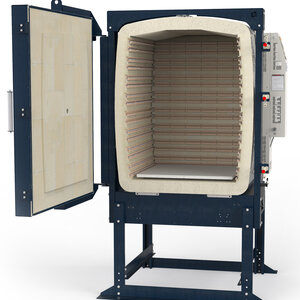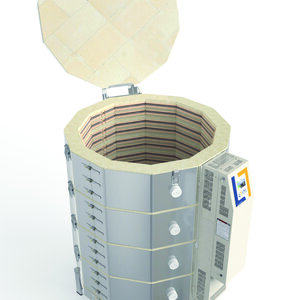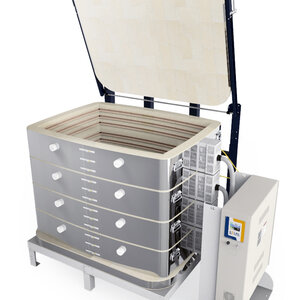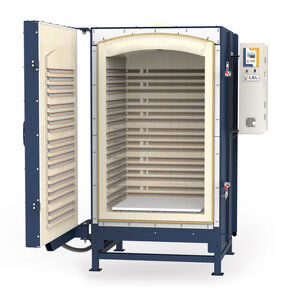Why K-12 Schools Choose L&L Pottery Kilns
Trusted Pottery Kilns for K-12 Schools and Classrooms
L&L kilns are the best choice for K-12 ceramic programs explicitly designed for the demands of educational environments; our kilns offer unmatched safety, durability, and ease of use.
Durable Kilns That Withstand Daily Classroom Use
- Built with exclusive ceramic element holders, L&L kilns protect both the elements and the kiln’s interior, ensuring long-lasting performance even with frequent use.
- Heavy-duty construction holds up to the wear and tear of busy classrooms, minimizing costly maintenance and downtime.
- Save Hundreds of dollars a year in maintenance costs.
Advanced Safety and Easy-to-Use Controls for Teachers
- All models now include the Genesis Touchscreen Control, making it simple for teachers and students to program and monitor firings confidently.
- A convenient mobile app allows remote kiln monitoring—perfect for busy teachers who must stay informed without being tied to the classroom.
- The ceramic channels make the kiln safer because elements are less prone to falling out of their grooves.
Empowering Student Creativity in Every Firing
- With user-friendly controls and consistent, reliable results, L&L kilns help students confidently explore their creativity and produce beautiful ceramic pieces.
- Whether it’s an elementary art class or an advanced high school ceramics program, our kilns support every level of learning.
Pottery Kilns for Schools and Classrooms
Built for the unique needs of K-12 art programs—safe, durable kilns that support hands-on learning in ceramics and pottery.
Reliable kilns for K-12 art programs, ideal for low-fire projects. Backed by a 5-year warranty.
Versatile kilns rated for Cone 10, supporting a wide range of clay and glaze types. A great choice for exploring ceramics in schools.
Heavy-duty kilns designed for Cone 10 firings, advanced programs, and high-temperature ceramics education.
Built for safer, easier loading of ceramics in schools and classrooms, the eFL Series is ideal for pottery and ceramics education.
How to Select the Right Kiln for Your School’s Art Program
Selecting the right kiln ensures safety, supports your budget, and matches your teaching goals. Learn how to choose the perfect kiln for your art room, whether you’re starting a program or upgrading existing equipment.
Find out more on this page.
Download the L&L School Catalog
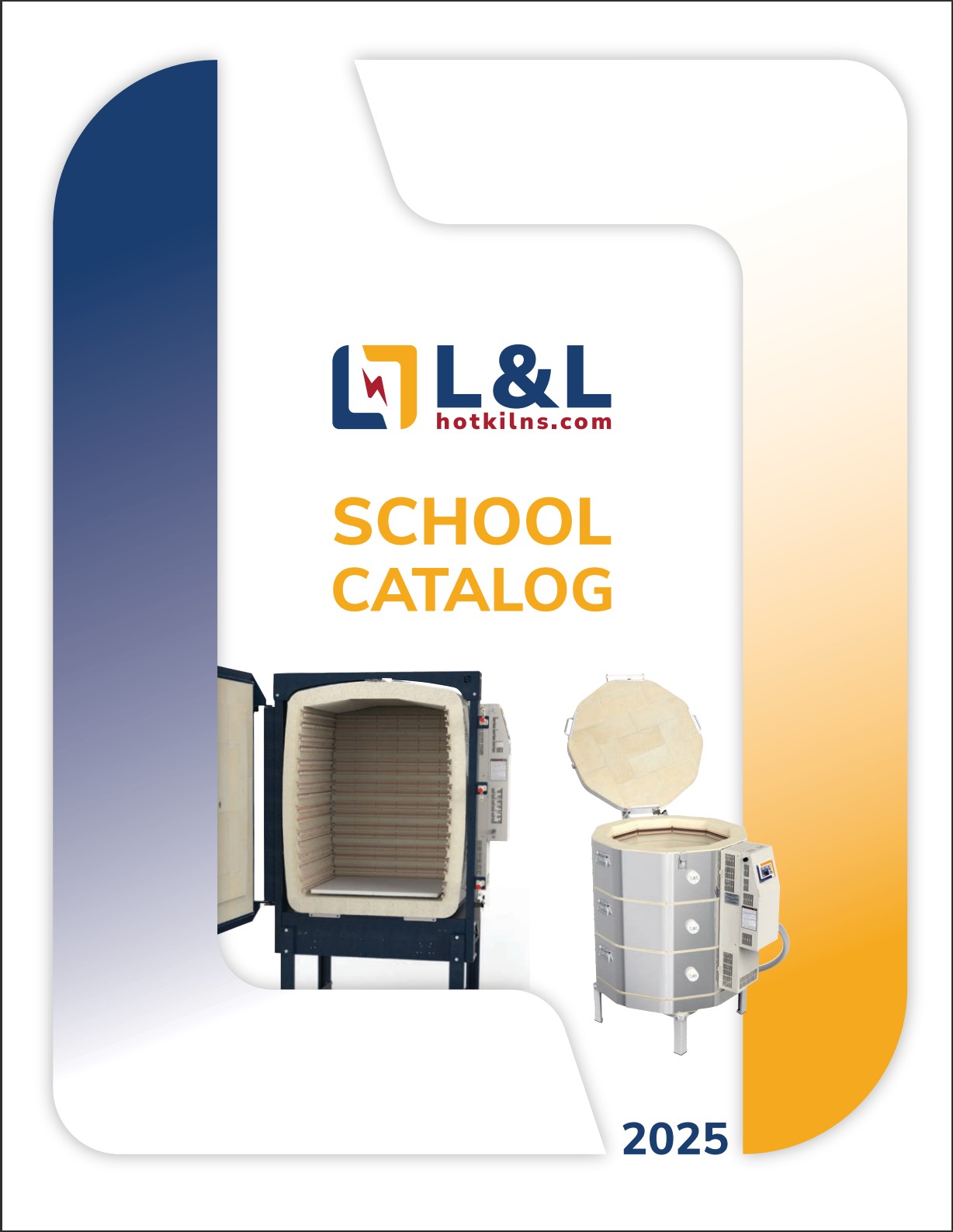
K-12 School Kiln Packages
Elementary & Middle Schools
- School-Master SM23T-3 Package (Low-Fire, Cone 6, 6.7 cubic feet, 38 bowls)
- Easy-Fire e23T-3 Package (High-Fire, Cone 10, 22" Diameter by 27" High, 6.7 cubic feet, 38 bowls)
- Easy-Fire e28S-3 Package (High-Fire, Cone 10, 28" Diameter by 18" High, 6.8 cubic feet, 50 bowls)
Advanced Middle School & High School
- eQuad-Pro eQ2827-3 Package (High-Fire, Cone 10, 28" Diameter by 27" High, 10.2 cubic feet, 74 bowls)
- Easy-Fire e28M-3 Package (High-Fire, Cone 10, 28" Diameter by 22" High, 8.5 cubic feet, 62 bowls)
- Easy-Fire e28T-3 Package (High-Fire, Cone 5 to 10 depending on voltage, 28" Diameter by 27" High, 10.2 cubic feet, 74 bowls)
Advanced High School
- eFL Series eFL2635 Package (Front-Loading, High-Fire, Cone 10, 26” Wide x 35” High x 26” Deep, 13.7 cubic feet, 128 bowls)
Pottery Kilns For Universities
Durable kilns engineered for higher-education ceramics programs—built to handle advanced projects, high-volume workloads, and the demands of university art studios.
Effortless Cone 10 performance on any voltage or phase. Heavy-duty elements deliver reliable, high-temperature firings for advanced university ceramics programs.
Large-capacity kilns designed for easy loading, maintenance, and consistent results—ideal for university ceramics studios and large-scale student projects.
Engineered for safer, ergonomic loading and superior capacity, these kilns are perfect for universities managing larger student cohorts and intensive firing schedules.
Why Teach Ceramics?
"There is nothing in education quite like teaching ceramics. Inherently interdisciplinary, ceramics underpin the world economy while students and teachers love the process and results. Addressing cognitive, affective, and psycho-motor domains in a single captivating act, ceramics creates in the learner the compulsion to learn more for intensely personal reasons. All the research on this reality demonstrates that student scores rise when ceramics motivates them to learn. Why merely study the world when we can hold it in our hands to create new, personal meaning by practicing the ancient arts that gave us computer chips, fiber optics, solar panels, microscopes, telescopes, and cameras? Today’s tech world leads to views from art history, geography, economics, chemistry, physics, and design across the curriculum - all connecting to the earth in their hands. Education thrives when students crave more engagement. The ceramic arts feed that hunger for more."
Bob Feder, President of The National K12 Ceramic Exhibition Foundation Inc., Doctoral dissertation: Life-Changing Earth: The Career Choice of Studio Potters, Rutgers University, 1988
"L&L is the best electric kiln on the market"
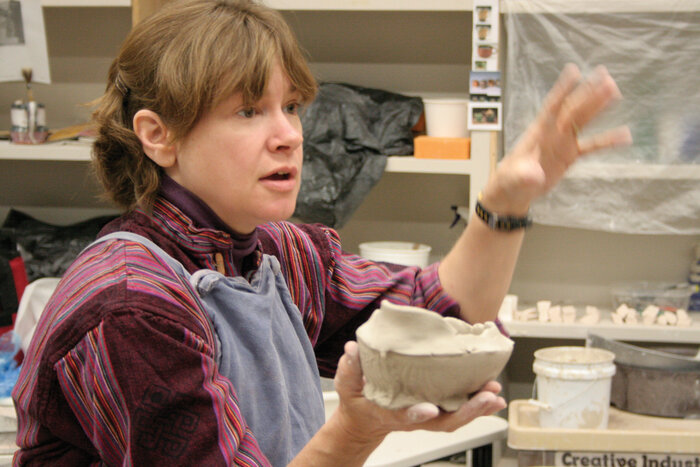
"These kilns keep looking new for decades because of the element holders. Now with the zone control, they fire absolutely evenly from top to bottom. All of this excellent engineering, along with their reasonable prices, make L&L the best electric kiln on the market."


